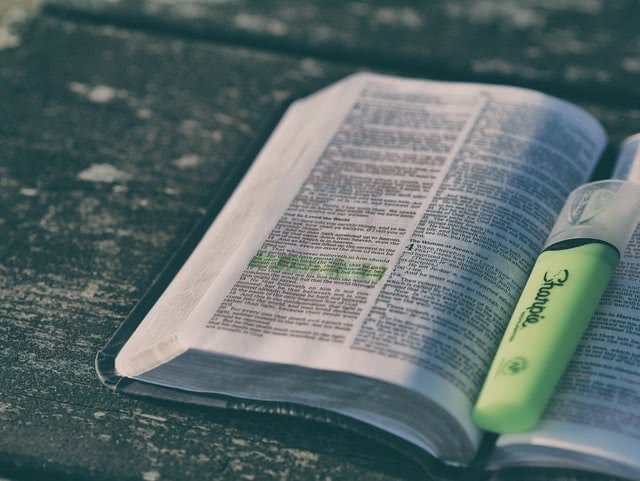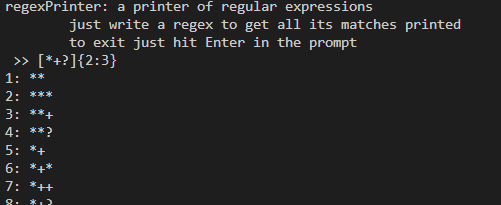
One common use of regular expressions is to look for strings that have a certain structure in a bigger string (say a text). As an example, the regular expression abc(d|e) can be used to look for the strings "abcd" and "abce", where the character | denotes we have to make a choice (see image above). Thus cat|dog would match the strings "cat" and "dog". There are other special symbols that have meanings and purposes.

One very interesting question that arises is: given a regular expression, what are the strings matched by it? To answer that question I wrote a small Python program, that I called regexPrinter, that prints all strings matched by a given regular expression! In order to manage that task, I chose a subset of the regex syntax that I wanted to be able to print and also decided that whenever a piece of a pattern was infinite, at a given point the program would just print "..." to denote that infinity. This way, for any regex given, the program always stops.
The regexPrinter supports:
- the
*operator, that denotes that \(0\) or more repetitions are to be matched. For example,ah*matches "a", "ah", "ahh", ...; - the
+operator that denotes that \(1\) or more repetitions are to be matched. For example,(hue)+matches "hue", "huehue", "huehuehue", ...; - the
?operator that denotes either \(0\) or \(1\) occurrences of the preceding pattern. For example,woo(hoo)?matches "woo" and "woohoo"; - the
{a:b}operator that matches no less than \(a\) and no more than \(b\) repetitions of the preceding pattern. As an example,su{1:3}rematches the strings "sure", "suure" and "suuure"; - the
|operator that denotes a choice.cat|katmatches "cat" and "kat" andthank(s| you)matches "thanks" and "thank you"; - the
[]denote that only one pattern from the ones given are to be matched. For example[abc]matches "a", "b" and "c"; - the parentheses
()that are used to group things. One thing to note is that the quantifiers*+?{:}all have higher precedence than string concatenation e.g.,ab?is interpreted asa(b?)and not(ab)?.
Please bear in mind that any character with no special meaning is interpreted literally, except inside the grouping operator [], where every character is interpreted literally. That is, [ab*] matches "a", "b" and "*", while b&=' will match the string "b&='".

The code for the program can be found here on GitHub and all it takes is vanilla Python 3 to run. Just run the script and you will be prompted to insert regular expressions. The techniques I used were very, very similar to the ones I used to create my toy programming language, as I saw in this blog series. The way I went about writing this program was by implementing a parser for a subset of the grammar used by regular expressions, generating a tree representation for the regex and then visiting all nodes of the tree, where each node knows how to print itself.
It is the 24th of July of 2020 and I am migrating this post from my old blog to here, almost 3 years after I originally wrote it. I noticed the program is flawed, for example the program can't handle the regex [*+?{:}]{2:3} even though it looks like it should... I challenge you to fix the program! Let me know how it goes :)
Become a better Python 🐍 developer, drop by drop 💧
Get a daily drop of Python knowledge. A short, effective tip to start writing better Python code: more idiomatic, more effective, more efficient, with fewer bugs. Subscribe here.
